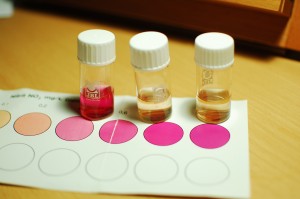As I am writing this post, I am measuring the nitrates level (NO3) in our freshwater aquarium as I do at least once a week. My level today seems to be somewhere between 10 and 20 ppm. As it has been as long as I can remember.
Now, especially if you are from North America (based on my experience on some forums I visit) you might think “How come he says as long as I can remember?” or “OMG, you must change your water!”. For some reason on some forums, without mentioning any names, changing the water once a week is an obsession for some and having a level of 20 ppm nitrates in your tank is somehow crazy. Well, I disagree.
As you know, nitrites turn into nitrates through the nitrogen cycle. This is good. A well functioning freshwater aquarium has a level of 0 ppm of nitrites in the water. If this goes up, time to change the water and start thinking of the reasons why nitrites levels are up (dead fish in the water, too much feeding, old filter system.. or something else). But nitrates is different. Actually, to have nitrates in the water is good because of the plants. The plants need nitrates (actually they need either ammonia or nitrates, but you don’t want to have ammonia in your water. At all).
In my freshwater aquarium, I have plenty of plants. These plants will use the nitrates in the water for their growth and turn the wasteful nitrates into proteins – and more beautiful plants. It’s really like a good cycle; I get lower levels of nitrates and at the same time greater plants. And this has been going on for as long as I’ve had my Juwel RIO 180 tank. And there is no reason to believe that this would change either, so I am really hoping to have low nitrates levels from now on.
To summarize, I have 0 ppm nitrites and 10-20 ppm of nitrates and with the amount of fish and plants I currently have, this is a stable ecosystem. If either the number of fish goes up, or the number of plants go down this stable ecosystem will change. Only you can know when and if you have a stable ecosystem. With this kind of stable ecosystem you don’t necessarily need to change the water that often.


